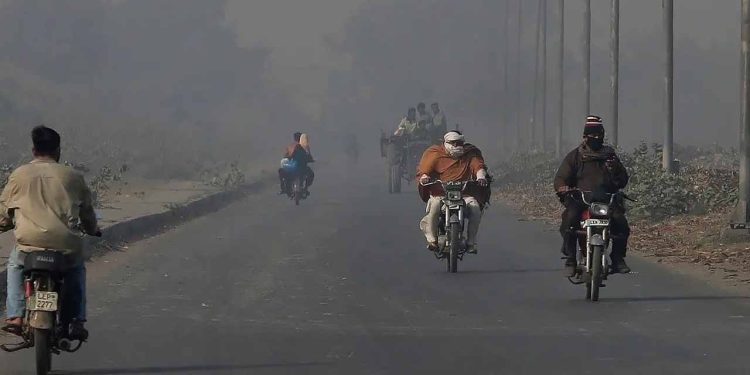Pakistan, like many South Asian countries, is grappling with a severe surge in pollution levels, resulting in some of the worst air quality in the world. According to IQAir, a Swiss air quality technology company, Pakistan maintained its position with the second worst air quality in 2023, with an average PM2.5 concentration of 73.7 micrograms per cubic meter (μg/m³).
PM2.5 refers to lung-damaging airborne particles, with a recommended limit of 5μg/m³ by the World Health Organization (WHO). The capital city, Islamabad, recorded its highest-ever PM2.5 levels, reaching 42.4μg/m³ in its seven-year history. Meanwhile, Lahore, previously labeled as the world’s most polluted city in March 2023, saw its PM2.5 levels rise to 99.5μg/m³, surpassing the WHO guidelines significantly. In November of the same year, Lahore’s monthly average PM2.5 level peaked at 251μg/m³, prompting courts to declare a “smog emergency” and direct the government to take action.
Numerous cities in Pakistan, including Faisalabad, Karachi, Peshawar, and Rawalpindi, have also recorded alarmingly high PM2.5 levels, far exceeding WHO recommendations. Various factors contribute to this hazardous air quality, such as crop burning, deforestation, industrial emissions, vehicle exhaust, and smoke from brick kilns.
In response to the crisis, the government imposed lockdowns in multiple cities across Punjab due to thick smog. In a pioneering move in December 2023, Lahore witnessed the country’s first artificial rain as planes equipped with cloud-seeding technology flew over ten areas to alleviate the dangerous air quality levels.
Pakistan’s average PM2.5 levels are second only to Bangladesh, which recorded 79.9μg/m³, with India ranking third at 54.4μg/m³. The situation underscores the urgent need for comprehensive measures to tackle pollution and safeguard public health.







